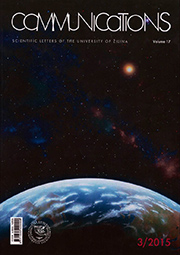Influence of Mechanical Anisotropy in Low Carbon Microalloyed Steel
Influence of Mechanical Anisotropy in Low Carbon Microalloyed Steel
Author(s): Jozef Bronček, Peter Jankejech, Peter Fabian, Norbert RadekSubject(s): Energy and Environmental Studies, Methodology and research technology
Published by: Žilinská univerzita v Žilině
Keywords: toughness; microstructure; inclusions; pipeline steel; segregation;
Summary/Abstract: The energy industry is one of the most discussed topics in modern days. Among the critical areas belongs the production and sale of energy, including fuel extraction, manufacturing, refining and distribution. As today's society consumes large amounts of fuel, the energy industry is affecting the infrastructure and maintenance of all civilizations across the globe. Transportation of oil and natural gas through a pipeline system proves to be most efficient and safe. Most pipelines are made from steel. The quality and properties of steel used in this field are determined by the environmental safety requirements and industry regulations. The majority of steel pipe carrying oil and natural gas is the low representation of carbon and other alloys such as manganese and silicon. Manufacturers of this kind of steel have a stringent focus on quality testing such as tensile strength ratio, toughness and hardness. The purpose of this contribution is to focus on the microstructural anisotropy caused by chemical segregation and non-uniform distribution of inclusions in X65 pipeline steel, with focusing on the toughness properties and microstructural analysis.
Journal: Komunikácie - vedecké listy Žilinskej univerzity v Žiline
- Issue Year: 17/2015
- Issue No: 3
- Page Range: 25-30
- Page Count: 6
- Language: English

